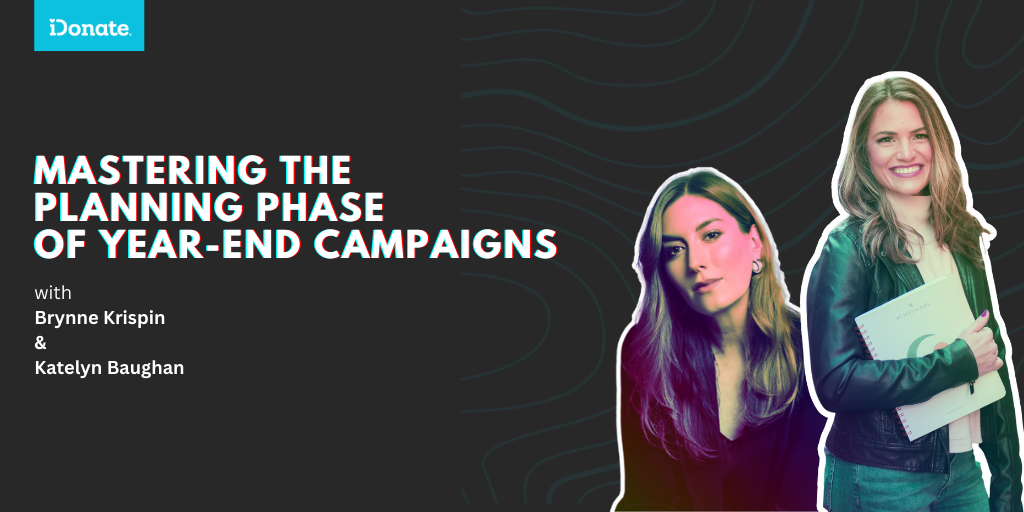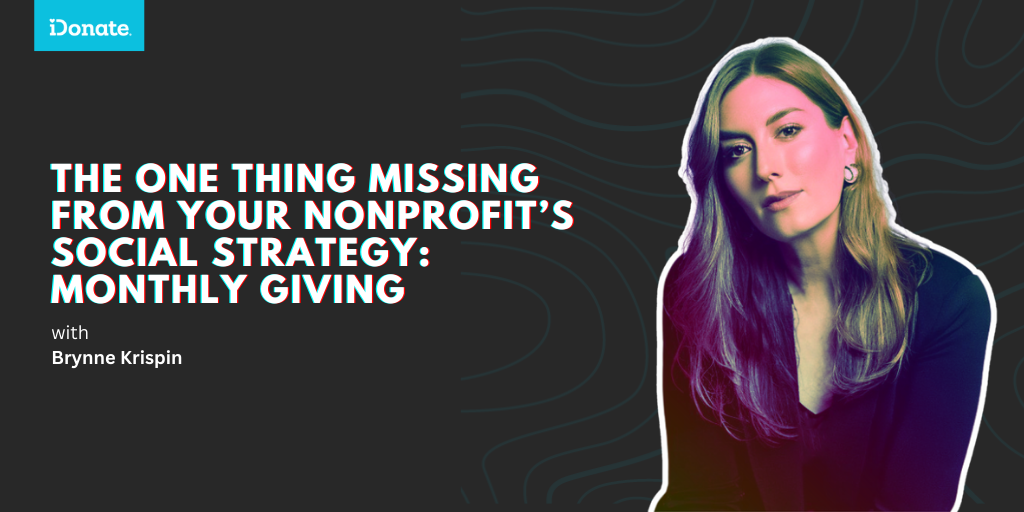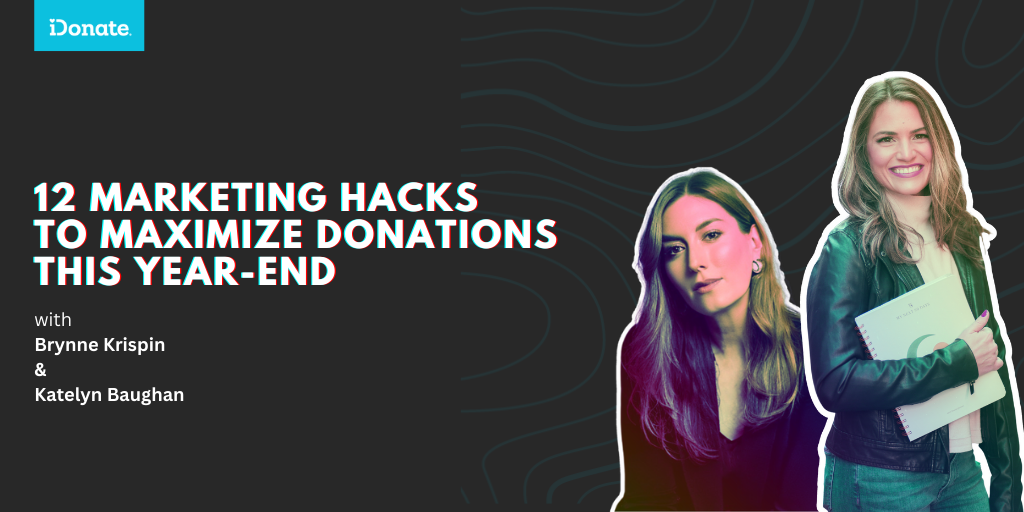Mastering the Planning Phase of Year-End Campaigns
Year-end campaigns that fall short aren’t because the graphics aren’t pretty, or the theme isn’t catchy, it’s usually because they aren’t planned...

Use no-code tools to quickly build donation page variants, launch A/B tests, and get clear results that help you drive more donor conversions with a single platform.
New to online donation pages for your nonprofit? Start here.
Donation page A/B testing - no science degree needed.
Keep your donation page loading fast - and drive higher conversions.
5 min read
 Brynne Krispin
:
January 30
Brynne Krispin
:
January 30

Social media is one of the most powerful tools available to nonprofits—it helps us tell our stories, build community, and inspire action. But let’s be honest: managing social media as part of a small team can be exhausting.
Between writing posts, responding to messages, analyzing metrics, and keeping up with platform changes, it can sometimes feel like social media is a full-time job in itself. And for many nonprofit teams, the person managing social is already wearing five other hats.
I hear this all the time from nonprofit leaders and their teams:
And in my 10+ years in social, I haven’t seen a project process perfectly suited for the flexibility it requires. To succeed in social, you simultaneously have to be planning ahead all the time so you’re not scrambling to get content out the door, while also leaving room for fly-in posts and trending topics so you stay relevant and seize opportunities that arise at random moments. It’s no wonder burnout is such a common issue in the social media industry.
But if there’s one thing I love, it’s a good puzzle. Taking something that seems impossible and unpredictable and finding a good system to manage it (which is also how I’ve survived parenting 😊).
With the right strategies in place, small teams CAN create a streamlined social media workflow that saves time, reduces stress, and delivers real results. After testing about a million different solutions (ok, maybe more like 20), here’s what I’ve found works to build an agile social media workflow that’s a healthy mix of structure and flexibility.
Before diving into content creation, step back and look at the bigger picture. Ask yourself:
When you’re clear on your goals and audience, you can focus your energy on creating content that aligns with your mission—rather than chasing every trend or trying to be everywhere at once.
Pro tip: Create a social media mission statement that ties your strategy back to your organization’s overall goals. It will serve as your North Star when deciding what to post (and what to skip). This also gives you a leg to stand on when leadership is putting too much on your plate and you need to make a case for letting some things go.
A well-thought-out content calendar can be a game-changer for small teams. It gives you a roadmap for the month ahead, so you’re not scrambling for ideas at the last minute.
Here’s how to make it work:
Use tools like Asana, Airtable, or even a shared Google Sheet to map out your calendar and keep your team aligned.
Designing new graphics for every post is a quick path to burnout. Instead, create a set of branded templates that you can reuse for different types of posts:
With tools like Canva, it’s easy to customize templates to fit your branding. This approach not only saves time but also ensures your visuals are consistent across platforms.
There’s no need to spend hours manually posting content. Scheduling tools like Planable, Hootsuite, or Sprout Social can help you plan posts in advance and automate the publishing process. Planable has a “set as a recurring post” button so you can schedule evergreen posts easily.
But automation isn’t just about posting—it can also help with:
The key here is to automate the tasks that don’t require a personal touch, so you can focus on what matters most: building relationships with your audience.
Here’s the exact content production workflow we use with clients that I built back in my day as an in-house social media manager. It’s simple, yet so effective. One client told us recently we plan “too much” and now we’re “too far ahead” in our content calendar 🤣. A great problem to have!
I learned the hard way that so much of creating high-quality content that actually gets approved on time comes down to 1) communicating expectations with stakeholders, 2) setting appropriate amounts of time aside to revise and schedule, and 3) building habits I could stick to.
Here’s the truth: Social media isn’t a “set it and forget it” kind of tool. Engagement—responding to comments, answering DMs, and interacting with your audience—is what builds trust and drives action.
To make this manageable, set aside small, focused windows of time each day to check in and respond. (Think: 10–15 minutes in the morning and another 10–15 in the afternoon.)
This approach prevents you from feeling like you have to be “on” 24/7 while still staying responsive to your audience. Here’s my list of priorities when I log in to do my engagement:
It’s easy to feel like you have to be everywhere all the time. But remember: you’re human, not a machine.
Here’s an example of a weekly schedule I built for our content creators to help them manage their time during the week while supporting a nonprofit client with social media management. We always aim to schedule all posts by Friday for the upcoming week. This leaves room to make adjustments and reserve space for fly-ins as needed during the week.
Here’s a template link to create your time blocking schedule in Canva if you’d like.
If your team is still feeling overwhelmed, it might be time to bring in outside support. Whether it’s a part-time social media manager, a volunteer, or a partner agency, getting help doesn’t mean you’re failing—it means you’re prioritizing your mission and your team’s well-being.
Social media doesn’t have to be stressful, and burnout shouldn’t be the norm. By building a streamlined workflow and protecting your team’s energy, you can create a social media presence that amplifies your mission—without overwhelming your team.
What strategies have worked for your team to reduce stress and streamline your social media? I’d love to hear your tips in the comments!
About the Author
Brynne is a social media strategist for NGOs and purpose-driven businesses.
Working with NGOs, thought leaders, and policymakers in DC for the last decade, she specializes in getting people to care about complex issues that might otherwise get ignored.
Her team at Cause Fokus uses empathy-based marketing to turn passive audiences into loyal advocates.

Year-end campaigns that fall short aren’t because the graphics aren’t pretty, or the theme isn’t catchy, it’s usually because they aren’t planned...

What if I told you that the key to a thriving monthly giving program isn’t just a well-optimized donation page—it’s a consistent, compelling social...

As the year draws to a close, nonprofits everywhere are gearing up for one of the most critical times in the fundraising calendar. The year-end...